How to connect the washing machine drain hose to the sewer
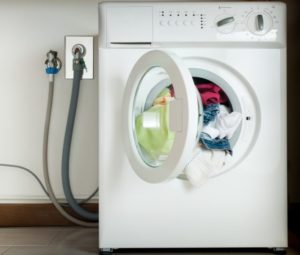 How to connect the drain hose of a washing machine to the sewer? It seems that everything is simple, you take it and connect it, but it was not so. Improper installation of the washing machine drain hose can lead to a number of problems in the near future. Even when carrying out such a simple action, one cannot neglect the simple rules for connecting a washing machine, which we will talk about today, despite the fact that there are many ways to do this.
How to connect the drain hose of a washing machine to the sewer? It seems that everything is simple, you take it and connect it, but it was not so. Improper installation of the washing machine drain hose can lead to a number of problems in the near future. Even when carrying out such a simple action, one cannot neglect the simple rules for connecting a washing machine, which we will talk about today, despite the fact that there are many ways to do this.
How to connect?
There are different ways to connect to the sewer system, as well as to organize the drainage of waste water from an automatic washing machine. The connection is organized depending on a number of factors:
- on how close the sewer drain is to the body of the washing machine;
- is there even a connection point within reach;
- at what height and at what angle relative to the washing machine body is this point located;
- what other equipment will have to be connected to the sewer along with an automatic washing machine, etc.
The angle of placement of the drain hose relative to the location of the washing machine is very important to consider. If the hose is positioned incorrectly, a “siphon effect” will occur, water from the sewer pipe will flow back into the bowels of the washer.
 Based on the above factors, there are three main ways to organize waste water drainage for a domestic helper. Firstly, you don’t have to organize a drain at all if you throw the drain hose into a nearby plumbing fixture, for example, into a bathtub, sink or even toilet.
Based on the above factors, there are three main ways to organize waste water drainage for a domestic helper. Firstly, you don’t have to organize a drain at all if you throw the drain hose into a nearby plumbing fixture, for example, into a bathtub, sink or even toilet.
Secondly, the washing machine can be connected to the side outlet of the siphon.This outlet is ideal for screwing a drain hose to it and forgetting about the problem once and for all. And thirdly, the washing machine’s drain hose can be secured with a clamp by first inserting such a hose into a branch of the sewer pipe - it’s cheap and cheerful, and most importantly, you don’t need to buy a special siphon with an outlet under the sink. We will talk in more detail about how to implement these three methods of draining water a little later, but now we will focus on the important nuances that can affect the quality of such a drain.
What else matters?
Why are we talking about the quality of the drain, and what difference does it make at all what kind of connection to the sewer we chose? The main thing is to do everything relatively correctly, and then it doesn’t matter. This is the opinion of many people who independently undertake to connect an automatic washing machine to the water supply and sewerage system and thereby, unwittingly, shorten the life of their “home assistant”. What exactly are we talking about?
Let us explain with a specific example. We connect two absolutely identical automatic washing machines to the sewer system. The first machine is located nearby, at a distance of 1 m from the connection point, we connect it using the 1.5 m long drain hose included in the kit in compliance with all the rules. The second machine is located at a distance of 2.4 meters from the connection point to the sewer pipe or siphon; we connect it using an additionally purchased drain hose 3 m long.
Both washing machines have been in use for 7 years. The first washing machine worked this time without breakdowns, on the second the drain pump was replaced 2 times: the first pump broke after 4.5 years of operation, the second in the seventh year of operation.“Debriefing” revealed a pattern assumed by many, but still not uninteresting. The longer the “house helper” drain hose, the more often the pump will break down, since when working, it will experience loads exceeding the design ones.
Place the washing machine as close as possible to the point where it connects to the sewer.
 It is also of great importance how the washing machine is installed on a horizontal surface, since this also affects the working life of the pump, motor, as well as working connections of hoses and pipes, as well as electrical wiring. It is very important here that the washing machine is not only level, but also standing on a flat, solid surface that will not bend over time or become loose from constant vibration.
It is also of great importance how the washing machine is installed on a horizontal surface, since this also affects the working life of the pump, motor, as well as working connections of hoses and pipes, as well as electrical wiring. It is very important here that the washing machine is not only level, but also standing on a flat, solid surface that will not bend over time or become loose from constant vibration.
Various modern additions are also important, which allow, on the one hand, to facilitate the process of connecting the washing machine to the sewer, and on the other hand, to additionally protect it from certain risks, primarily the “siphon effect”. When we mention this, we are talking about drain hoses with a check valve. Such a valve is specially designed to ensure that sewage from the sewer under no circumstances gets back into the washing machine, while draining will be carried out completely freely. You can read about this device in the article Check valve for washing machine.
Consumables and tools
Before installing the washing machine, including connecting it to the sewer, you need to acquire all the tools and materials that will be required for this work, so that later you do not have to take breaks to run to the store for a clamp or jumper. So let's start with the tools.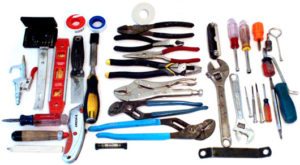
- Large and small adjustable wrench.
- Screwdrivers (flat and Phillips).
- Device for cutting plastic pipes.
- Pliers.
- Sharp knife.
- Roulette.
- Building level.
The set of tools is not rich. It’s immediately clear that the entire list can be easily found in any pantry. If you do not have a device for cutting plastic pipes, you can use a regular hacksaw instead. Now let's look at the materials.
- Drain hose of the required diameter and length.
- Plastic sewer pipe and tee for it.
- Jumpers and clamps.
- Check valve.
- Automotive or plumbing sealant.
- Rewinding.
- O-rings and gaskets.
Before purchasing small consumables, such as O-rings and gaskets, calculate how many you will need.
No connection
Now let's talk directly about how to properly connect our washing machine to the sewer. And, we will start with the simplest option for organizing a drain, which, paradoxically, does not involve connecting the washing machine to a sewer pipe. Let's talk about it.
This method is good for lazy people, since its implementation does not require a lot of materials and tools. And a minimum of time will be spent. However, certain conditions must be met.
- Near the body of the washing machine, at a suitable height, there should be a sink, bathtub, shower stall with sufficiently high sides, toilet bowl or basin.
- It must be possible to secure the drain hose. Why pin it? And then, so that it does not accidentally jump out of the plumbing element when water under pressure rushes from the washing machine tank through the hose into the drain of the sink, bathtub, etc.
- People who use plumbing should not be squeamish, since they will have to endure some inconveniences that will arise in connection with such an organization of draining water from the washing machine tank.
To organize drainage in this way, you need to lower the hose of the machine into the bathtub, sink, toilet, etc. not tight. Provide an S-shaped bend in the hose. Fasten it to the wall of the plumbing element so that it does not dangle freely, and then carry out tests. If the drainage is carried out normally, you can leave everything as is, the work is finished.
Through siphon
Installing the connection using this method is special in that we connect the washing machine’s drain hose not to a sewer pipe or its branch, but to another plumbing element - the sink siphon. In modern siphons, manufacturers provide a special outlet for connecting a washing machine, which we should use.
There are siphons with two outlets to simultaneously connect a washing machine and a dishwasher.
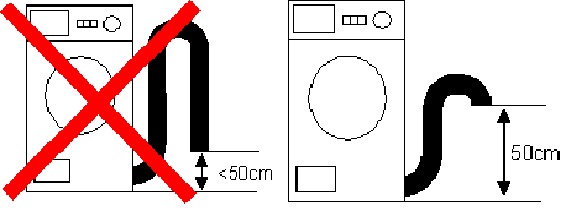
The essence of connecting the washing machine via a siphon is as follows. We install a siphon and check how the water is drained through the drain hole of the sink, make sure that there are no leaks. The siphon can be easily installed with your own hands without any tools. If you have problems with this, you can read the article Siphon for washing machine - installation and connection. Next, connect the drain hose to the side outlet of the siphon, not forgetting to seal the joint. The hose must be bent into an “S” shape; if this is not done, the first wash will end with the machine hanging in the middle.
Directly into the sewer pipe
You can also connect the washing machine to a sewer pipe outlet located nearby.To do this, such a withdrawal needs to be organized. Let's do the following.
- We purchase a tee for a sewer pipe.
- Use a pipe cutter to cut a plastic sewer pipe.
- We install the tee and seal the joint.
Well, the pipe outlet is organized. In this case, it is very important that the outlet be located at a height of at least 40 cm from the floor level. We insert the end of the drain hose into the pipe outlet and seal the connection. We additionally strengthen the connections with a clamp so that the pressure does not accidentally cause the pipe to jump out and flood the entire floor. We bend the hose into an “S” shape and secure it so that it does not dangle.
In conclusion, we note that connecting an automatic washing machine to the sewer is really not difficult if you follow the simplest instructions, which have long been formulated by specialists. You can do it too. Read this article and get started, good luck!
Interesting:
Reader comments
- Share your opinion - leave a comment
Categories
Washing machine repair


For buyers

For users

Dishwasher


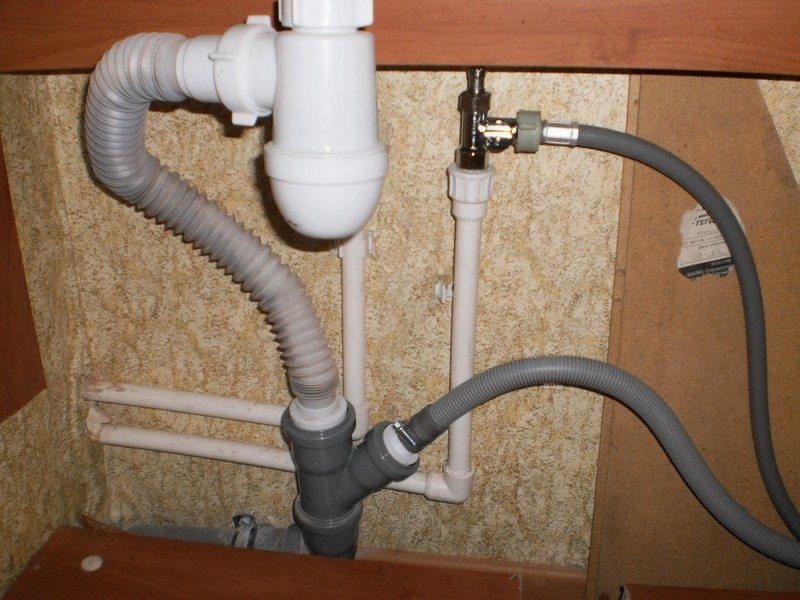

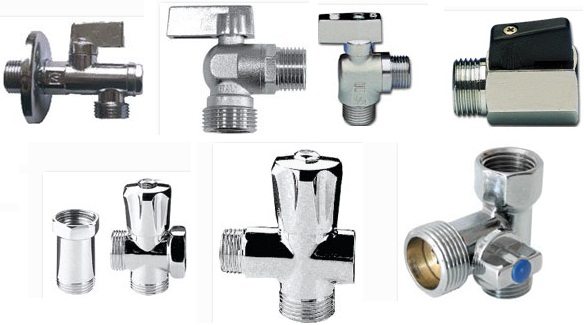

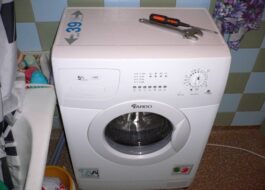










Add a comment